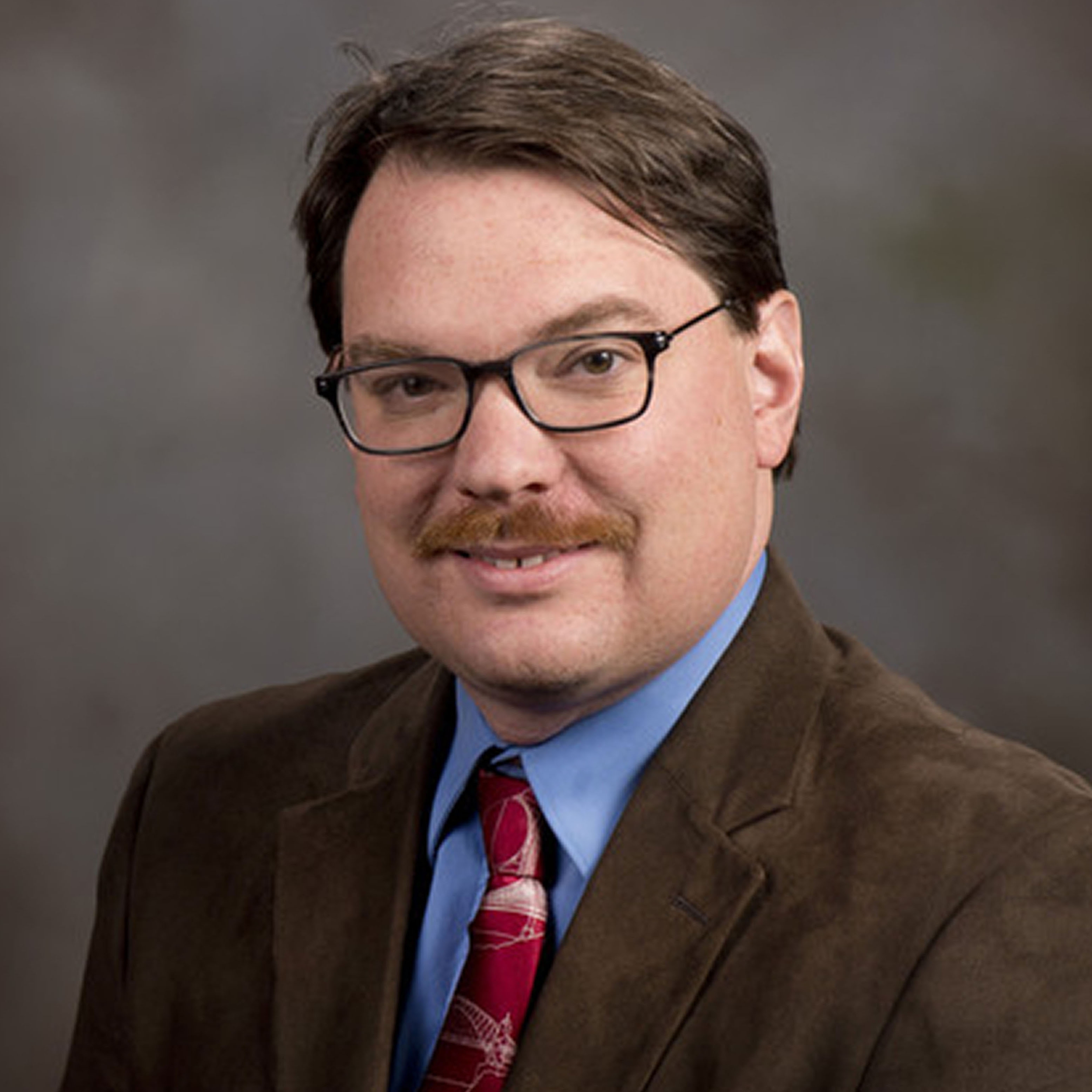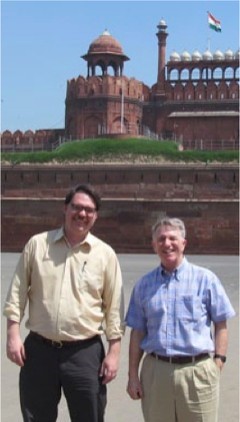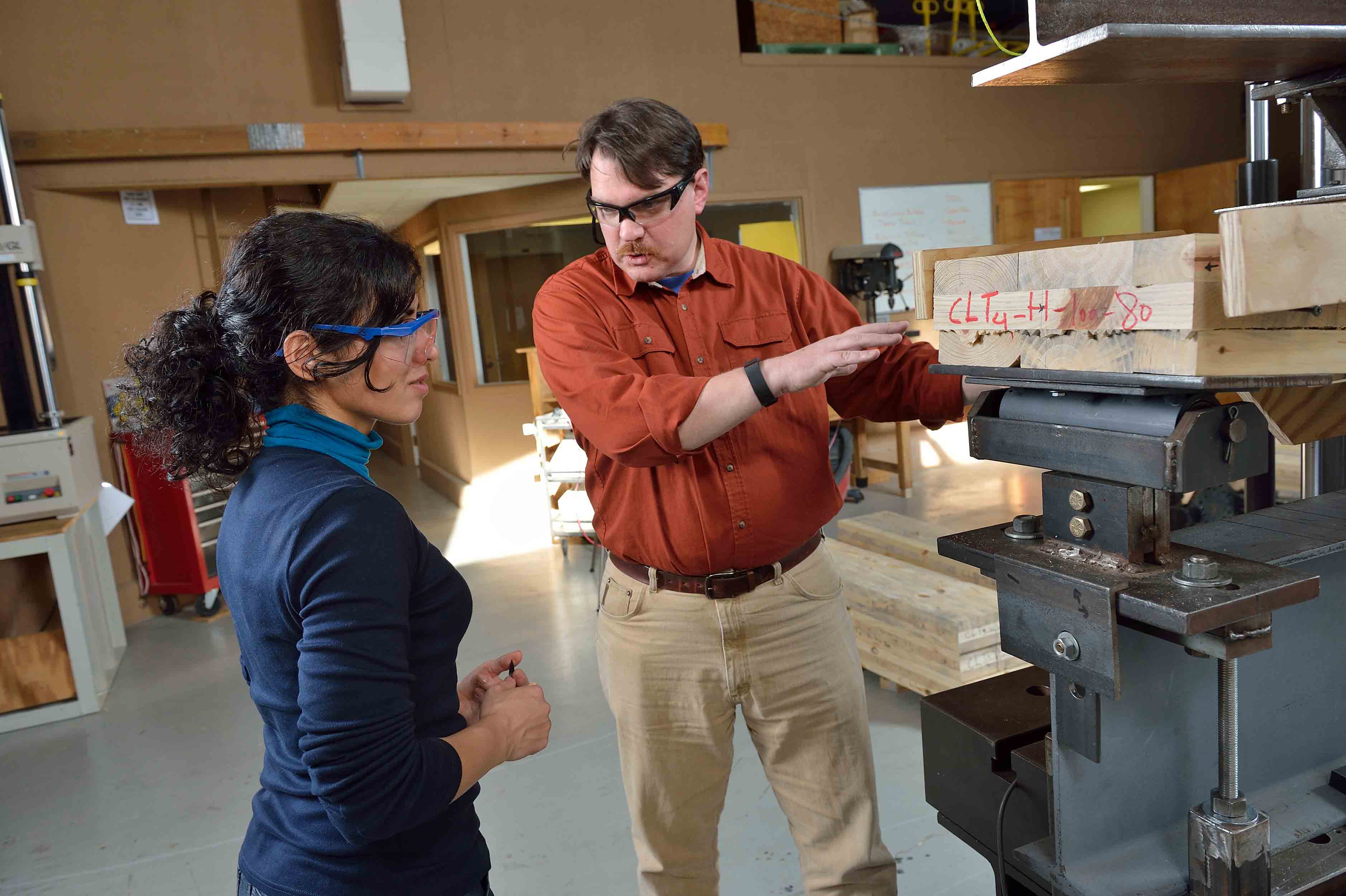Daniel Hindman
One of Us: The Person Behind the Professional
Photo of Dan Hindman

Dan Hindman
Dan Hindman grew up in a small town, Huntingdon, in Central Pennsylvania. He received his B.S. in Agricultural and Biological Engineering, M.S. in Forest Resources, and Ph.D. in Wood Composites Engineering (Interdisciplinary program) from the Pennsylvania State University. Dan joined Virginia Tech in 2003.
In high school, Dan began working on a small organic farm and learned how much agriculture could impact people. He chose Agricultural and Biological Engineering as his first majors in order to combine both his “interest in agriculture and my nature to fix things – take them apart, understand how they work, hopefully make them better. I specialized in the Ag Buildings/Environment option, but did a co-op in the Power/Machinery option area too” Dan continued. “I remember when I learned about green building in grad school and realized I could merge my ideas about sustainability from the organic farming with building construction. That has been a current evolution of thought into now with the development of the Center for Low Carbon Systems that myself and other faculty from SBIO and architecture are involved in.”
Dan focuses his current research on the efficient use of low carbon, biological-based materials in construction – and his research philosophy revolves around three principles relating to wood materials in construction: structure, safety, and sustainability. In fact, some of Dan’s favorite current projects are working with colleagues in the College of Architecture on understanding the mechanical properties of bamboo and developing novel composites. They believe this work will have strong implications for creating low carbon buildings throughout the world.
“One of my main areas of study for almost ten years has been cross-laminated timber or CLT. Virginia Tech received some of the first grant awards in the US for CLT. Current areas of study are the use of hardwood materials (working with many colleagues including Drs. Quesada, Bond, Loferski, Hammett) and the study of shear properties of CLTs. As a result of my previous study of yellow-poplar CLT, Kay Edge and Edward Becker (School of Architecture) built a train viewing platform out of CLT in Radford.”
Dan is also working on the digital fabrication of structural components. This is still pretty conceptual, but they have been using a CNC to create knock-down style structures from plywood. Dan thinks “there is tremendous potential in merging our skills of woodworking with digital manufacturing to make more extensive products in the future.”
One of his favorite things about being a professor is teaching classes, which Dan says is what he really enjoys. “I try to show my students why their work is important and valuable, but also how enjoyable it can be. I also like problem solving.” The classes that Dan finds really exciting and believes have a great potential to impact students and society are Green Building Systems and BIM in Residential Construction. These are two courses that Dan created.
Green building is a method of construction that considers economics, environment, and social concerns. Dan challenges the students of his Green Building Systems course to help solve real-world crises, and each semester, he tasks them with projects such as building storage systems for local food pantries or creating sustainable housing units for refugees. A few years ago, Dan’s students researched Syrian refugees’ needs and then integrated green building systems into producing a small, practical living space that could be created and shipped overseas for under $5,000. “I wanted the students to think about how sustainable construction could be used in challenging situations,” Dan said. And, “after looking at making refugee housing sustainable, finding ways to make residential construction in the U.S. sustainable should be simple.”
Moving onto his BIM classes, “Wood construction is an exciting field with a lot of promise. From one to three story residential construction to wooden skyscrapers, we are seeing a growing number of wood buildings of great size and diversity. One thing that almost all of these buildings have in common is the need for a coordinated plan to communicate the design, materials and construction methods needed. We call this BIM – building information modeling. BIM is used by architects, engineers, designers, site supervisors and supply chain businesses. In fact, BIM has become so common in the construction industry, most internships and jobs require it.”
Dan continued, “Many people have heard of CAD (computer aided drafting), but BIM is much more. BIM creates 3-dimensional objects rather than 2-dimensional lines. BIM also allows you to assign properties and assemblies to a material. You can also include costing and scheduling information specific to certain parts of the building. This is why so many parts of the construction industry use BIM – the amount of information contained allows for accurate information about a building. The understanding of BIM tools and knowledge related to wood construction, including mass timber, historical and light-frame residential buildings is essential for my students in the Sustainable Residential Structure option of the Sustainable Biomaterials major.”
Dan finds that developing connections with other faculty and having the freedom to do so here at Virginia Tech are his favorite things about the university. He currently lives in Blacksburg with his wife Wendy and son Tommy. They have two dogs and a cat. He plays the guitar and mandolin, and attempts to do woodworking in his free time. Dan believes he would be an engineer working with wooden buildings of some kind if he were not a professor in our department.
Some of Dan’s awards include recognition from the Forest Products Society for writing papers, and the National Frame Building Association for his participation in the research and technical committees.
Quote from a Colleague:
Dan Hindman is deeply committed to everything related to sustainability! His classes on Green Building, Wood Mechanics and Timber Engineering are all focused on applying science and engineering to using natural resources intelligently and effectively. He is interested in sustainable biomaterials for use in building construction and he has been researching materials such as wood, bamboo, and hemp. He has great rapport with his students and he truly loves teaching and helping students learn. He is a great colleague and team player. – Joseph Loferski, Professor, Sustainable Biomaterials
Dan Hindman in India

Houri Sharifnia and Dan Hindman (pre-pandemic).



